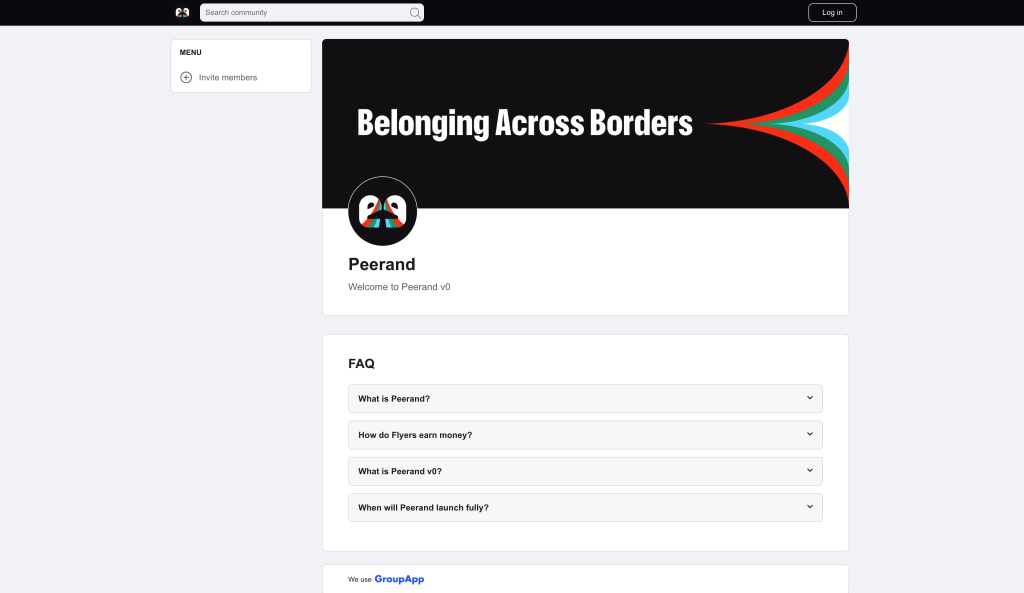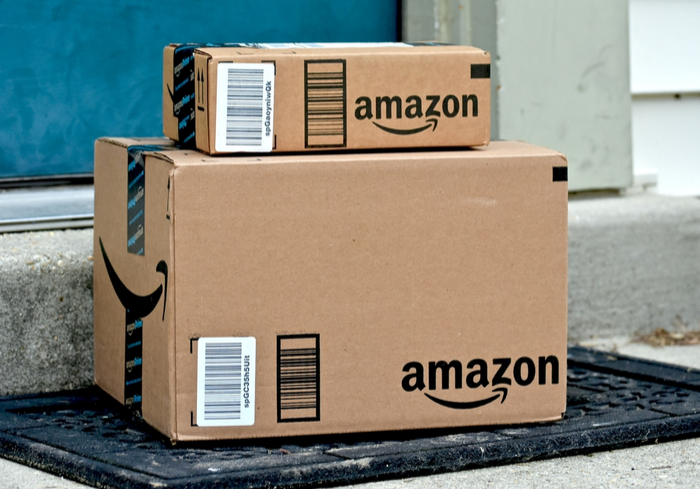In today’s interconnected world, international shipping has become a necessity for individuals and businesses alike. Whether you’re an online seller shipping products globally, a frequent traveler sending packages to loved ones, or simply looking for the cheapest international delivery to send a parcel overseas, finding an affordable and the cheapest international delivery shipping service is crucial.
Shipping costs can quickly add up, and with the rise of e-commerce and global trade, finding a balance between price, reliability, and speed is more important than ever. Some services offer budget-friendly rates but come with longer delivery times, while others prioritize speed at a premium cost.
In this guide, we’ll explore:
- Key factors to consider when choosing a low-cost international shipping service
- A comparison of top international couriers offering budget-friendly options
- Tips to reduce shipping expenses and avoid hidden fees
- The pros and cons of budget shipping services
- A look at alternative shipping models like Peerand
If you’re looking for the cheapest international delivery options without sacrificing reliability, this guide is for you!

The Impact of Seasonal Demand on International Shipping Costs
International shipping rates are not static; they fluctuate throughout the year, primarily due to seasonal demand surges. During peak shipping periods, such as the holiday season, Black Friday, Chinese New Year, and major global shopping events, shipping carriers experience an overwhelming increase in package volume. This surge directly affects pricing, availability, and delivery times, making it more expensive and sometimes slower to send international shipments.
Why Shipping Rates Increase During Peak Seasons
One of the biggest reasons for higher shipping costs during peak periods is limited cargo space. Airlines, freight carriers, and shipping companies prioritize high-value shipments and charge premium rates to accommodate urgent deliveries. With thousands of businesses and individuals shipping goods at the same time, available space for packages becomes scarce, forcing carriers to increase their rates.
Another challenge during these peak times is customs processing delays. When international shipments flood customs offices, it takes longer for goods to be cleared. This backlog leads to higher storage fees, extended transit times, and increased handling charges by both government agencies and shipping companies. Businesses that rely on just-in-time inventory systems may face disruptions due to these clearance delays, further complicating the logistics chain.
In addition, shipping providers such as FedEx, UPS, and DHL impose seasonal surcharges to manage increased operational costs. These surcharges cover additional staffing, overtime wages, fuel expenses, and warehouse management to accommodate the influx of shipments. Some carriers even implement temporary price hikes on popular international shipping routes, making it more expensive for consumers and businesses to send packages overseas.
How to Avoid High Seasonal Shipping Costs
One of the most effective ways to avoid excessive shipping costs during peak seasons is to plan ahead and ship early. Many carriers announce their peak-season surcharges in advance, allowing shippers to adjust their logistics accordingly. By sending packages before the holiday rush, businesses, and individuals can secure lower rates and avoid last-minute delays.
Another strategy for getting the cheapest international delivery is to explore alternative shipping methods. Economy shipping services, while slower, offer cost savings for non-urgent shipments. Additionally, peer-to-peer delivery models provide a flexible alternative to traditional couriers. Since they rely on existing travel routes and independent travelers, they are less affected by seasonal pricing fluctuations compared to major carriers.
For businesses, negotiating contract rates with carriers can help stabilize costs during peak periods. Large-scale shippers often receive fixed-rate agreements that protect them from seasonal price hikes. Small and medium-sized businesses can also benefit from third-party logistics providers that consolidate shipments and offer discounted bulk pricing.
Factors to Consider When Choosing the Cheapest International Delivery Service
Not all budget-friendly shipping services are created equal. To ensure you get the best value for money, here are some key factors to consider:
Package Size & Weight
Shipping costs for cheapest international delivery services are often calculated based on dimensional weight (size + actual weight). Some couriers charge extra for oversized packages, even if they’re lightweight.
Tip: Use a compact, well-packed box to reduce costs and avoid unnecessary surcharges.
Destination Country
Certain countries are more expensive to ship to due to customs regulations, import taxes, and delivery logistics. Remote areas might have higher delivery fees, even with budget carriers.
Tip: Use services that consolidate multiple shipments or offer local drop-off points to cut costs for cheapest international delivery.
Shipping Speed vs. Cost
- Express shipping (1-5 days): Fast but expensive.
- Economy shipping (10-30 days): Budget-friendly but slower.
Tip: If speed isn’t a priority, opt for economy shipping or a peer-to-peer delivery option like Peerand, where travelers carry packages at a lower cost.
Tracking & Security
Some budget couriers cut costs by offering limited tracking or lower compensation for lost items.
Tip: Choose services with reliable tracking and insurance options for peace of mind.
Tips and Tricks for Finding the Best Deals on International Shipping
If you’re looking to reduce shipping expenses, here are some smart strategies to help you get the best rates in cheapest international delivery:
Compare Shipping Rates Online
Use online tools like ShipStation, Easyship, or Parcel Monkey to compare multiple courier services at once.
Consolidate Shipments
Instead of sending multiple small packages, combine shipments into a single larger package to save money.
Use Flat-Rate Boxes
Some couriers offer flat-rate shipping, meaning you pay a fixed fee regardless of weight.
Choose an Alternative Delivery Method
Peer-to-peer delivery networks like Peerand allow senders to connect with travelers carrying extra luggage space, cutting costs significantly while ensuring faster delivery.

Understanding the Fine Print: Hidden Fees for the Cheapest International Delivery Services
Low-cost shipping services often advertise cheap base rates, but hidden fees can increase the final cost. Here’s what to watch out for:
Customs Duties & Import Taxes
Even if the courier offers cheap shipping, the recipient may still have to pay import duties and taxes.
Tip: Check duty calculators or use delivery services that handle customs fees upfront.
Handling & Service Fees
Some carriers charge extra for package handling, delivery confirmation, or peak season surcharges.
Tip: Always read the fine print before selecting a shipping service.
The Pros and Cons of Opting for the Cheapest International Delivery Option
Pros
- Lower upfront shipping costs
- More budget-friendly for small businesses and e-commerce sellers
- Access to slower, economy shipping options
Cons
- Longer delivery times
- Limited tracking & customer support
- Higher risk of package damage or loss
If reliability is a concern, Peerand offers an alternative where senders can communicate directly with travelers, ensuring real-time tracking and secure delivery.
Read also: Ship to Nigeria from USA: Fast, Affordable & Secure with Peerand
Understanding International Shipping Rates
International shipping rates vary based on several factors, and understanding how they are calculated can help you make cost-effective decisions when sending packages overseas. Whether you’re a business owner shipping products internationally or an individual sending a personal package, knowing what affects pricing can help you avoid overpaying and plan shipments efficiently.
Below are the key factors that determine the cheapest international delivery shipping rates:
Package Weight & Size
How weight and size impact pricing
Shipping costs are calculated based on actual weight (lbs or kg) or dimensional weight. Dimensional weight (DIM weight) is a formula used by couriers to account for the amount of space a package occupies on an aircraft or shipping container.
Formula for Dimensional Weight:
DIM Weight (lbs) = (Length x Width x Height) ÷ Carrier DIM Factor
- Carriers like FedEx, DHL, and UPS calculate shipping costs based on whichever is greater: actual weight or dimensional weight.
- Smaller, denser packages generally cost less, while large but lightweight packages may be charged at a higher rate due to their space consumption.
Tip: Reduce costs by using compact, well-packed boxes to avoid being charged for excessive dimensional weight.
Destination Country & Customs Fees
How location and international regulations affect shipping costs and the cheapest international delivery.
Shipping costs vary widely based on the country you’re shipping to due to:
- Geographical distance – Shipping to neighboring countries is cheaper than shipping across continents.
- Import taxes & duties – Some countries impose high import tariffs on certain products.
- Customs clearance fees – Some couriers charge an additional fee for processing customs documentation.
- Delivery network & infrastructure – Countries with well-established logistics networks have lower delivery costs, while remote or less developed regions incur higher fees.
Example:
- Shipping a 5lb package from New York to Canada via USPS Priority Mail costs $40-$50 and takes 5-7 days.
- Shipping the same package to Nigeria via DHL Express could cost $100-$150 with a delivery time of 3-5 days, depending on customs processing.
Tip: Use a duty calculator tool to estimate customs fees before shipping. Some couriers offer DDP (Delivered Duty Paid) services, where duties and taxes are paid upfront, avoiding unexpected costs upon arrival.
Speed of Delivery (Express vs. Economy)
How shipping speed affects cost
Most international shipping services offer multiple delivery speed options, each with different pricing:
Express Shipping (1-5 days) – Highest Cost
- Ideal for urgent deliveries (e.g., documents, time-sensitive goods).
- Services like DHL Express, FedEx International Priority, and UPS Express Saver provide fast delivery with premium pricing.
Standard Shipping (5-14 days) – Moderate Cost
- Best for general-purpose shipping (e.g., online purchases, personal shipments).
- Common services include USPS Priority Mail International, FedEx International Economy, and DHL eCommerce.
Economy Shipping (10-30 days) – Cheapest Option
- Used for non-urgent packages and bulk shipments.
- Options like USPS First-Class International and peer-to-peer delivery services (like Peerand) provide budget-friendly rates.
Tip: If you don’t need next-day delivery, choosing standard or economy shipping can save 50% or more on shipping costs.
Shipping Method: Air, Sea, or Peer-to-Peer
How transport type influences pricing. International packages are transported via:
Air Freight (Fastest, Most Expensive)
- Used by DHL, FedEx, UPS, and USPS Express services.
- Best for urgent, small, or high-value shipments.
Sea Freight (Slow, Cheapest for Large Shipments)
- Used for bulk shipments and containerized cargo.
- Ideal for businesses importing/exporting large quantities.
Peer-to-Peer Delivery (Affordable, Fast for Personal Packages)
- Platforms like Peerand match senders with travelers who have unused luggage space, offering a low-cost and fast alternative for small shipments.
- Best for personal packages, gifts, and lightweight items.
Tip: Businesses shipping in bulk can save up to 70% by choosing sea freight over air freight.
Read Also: Flight from US to UK: planning the perfect trip
Additional Fees & Surcharges
Hidden costs that can affect your total shipping price
Even if you choose a budget-friendly shipping provider, you may encounter unexpected fees such as:
- Fuel surcharges – Added fees based on global fuel prices.
- Remote area surcharges – Extra costs for deliveries to non-metro locations.
- Customs brokerage fees – Paid for handling customs paperwork.
- Residential delivery surcharges – Charged if delivering to a home instead of a business.
- Package handling fees – Applied for fragile, oversized, or high-risk items.
Tip: Always check the courier’s full list of surcharges before booking a shipment to avoid surprise costs.
Comparing Prices of Global Shipping Providers
When choosing a shipping provider for cheapest international delivery, cost isn’t the only factor. Consider:
- Speed vs. affordability – Is express delivery worth the extra cost?
- Customer reviews & reliability – Does the courier have a track record of safe, timely delivery?
- Alternative shipping methods – Would a peer-to-peer service like Peerand be cheaper and faster for certain shipments?
Final Thoughts: Finding the Right Balance Between Cost & Reliability
Finding the cheapest international delivery service requires a balance of affordability, reliability, and security.
- For small packages, services like USPS or DHL eCommerce may not be the most affordable, try Peerand instead.
- For businesses, FedEx and UPS offer cost-effective shipping for bulk shipments.
- For individuals looking for cheaper, faster options, Peerand’s peer-to-peer shipping model provides an alternative with reduced costs and direct communication with the traveler.
Ready to Ship? Join our community and get the best rates!


